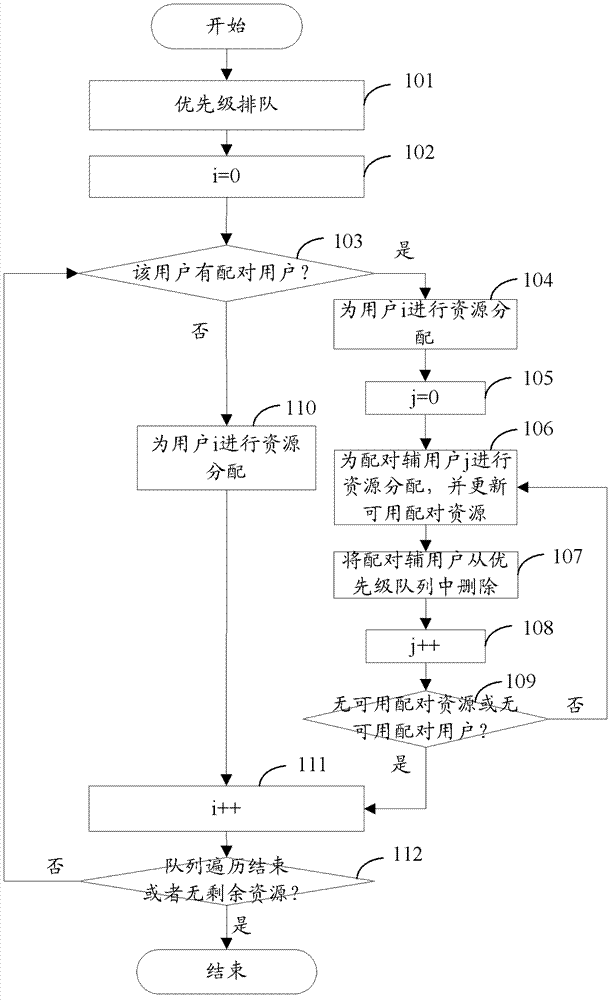Resource allocation method for MU-MIMO user pairing
A resource allocation and user pairing technology, applied in electrical components, wireless communication, etc., can solve problems such as inconsistency in resource requirements
- Summary
- Abstract
- Description
- Claims
- Application Information
AI Technical Summary
Problems solved by technology
Method used
Image
Examples
Embodiment Construction
[0022] The present invention provides a resource allocation method for MU-MIMO user pairing, the design concept of the method is:
[0023] A. Sort the users to be scheduled according to their priority;
[0024] B. Match users in order of user priority from high to low, define the user with higher priority among the paired users as the primary pairing user, and define the user with lower priority as the secondary pairing user;
[0025] C. Determine whether the paired secondary users of the paired primary user to be scheduled exist, and if so, put them into the available paired user queue according to the pairing matching degree of the paired secondary users from high to low;
[0026] D. Perform resource allocation for the paired primary user, and define the allocated resources as available paired resources;
[0027] E. Allocating the available pairing resources to each secondary pairing user in the queue of available pairing users in sequence.
[0028] In order to make the te...
PUM
 Login to View More
Login to View More Abstract
Description
Claims
Application Information
 Login to View More
Login to View More - R&D
- Intellectual Property
- Life Sciences
- Materials
- Tech Scout
- Unparalleled Data Quality
- Higher Quality Content
- 60% Fewer Hallucinations
Browse by: Latest US Patents, China's latest patents, Technical Efficacy Thesaurus, Application Domain, Technology Topic, Popular Technical Reports.
© 2025 PatSnap. All rights reserved.Legal|Privacy policy|Modern Slavery Act Transparency Statement|Sitemap|About US| Contact US: help@patsnap.com

